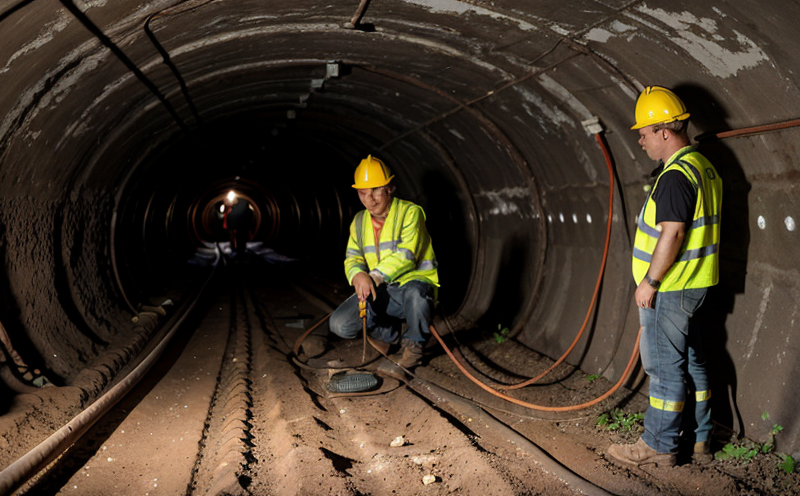Underground cable inspection
The integrity and reliability of underground cables are critical components in modern energy systems. These cables transport electricity over vast distances, ensuring power supply to homes, businesses, and industries. Underground cables operate under challenging conditions, subject to physical stress, environmental factors, and aging processes that can compromise their performance. Regular inspection is essential to maintain operational efficiency and prevent costly disruptions.
Underground cable inspection encompasses various techniques aimed at assessing the condition of these vital assets. These methods include direct observation, non-destructive testing (NDT), and condition monitoring systems. Each technique serves a specific purpose in evaluating different aspects of the cables' integrity. For instance, visual inspections can reveal surface defects such as corrosion or insulation damage, while NDT techniques like ultrasonic testing help identify internal flaws that are not visible on the surface.
The importance of underground cable inspection cannot be overstated, especially given the increasing demand for reliable and sustainable energy systems. As urban areas expand, more infrastructure is being buried beneath the ground, making access to these cables increasingly difficult. Efficient inspection methods allow for early detection of potential issues, enabling timely interventions before failures occur.
One key aspect of underground cable inspection is understanding its role within broader energy systems. For example, in smart grid technology, accurate and reliable data from inspections contribute to better resource management and optimized power distribution. Furthermore, compliance with international standards such as ISO 13106 ensures that inspections meet global quality benchmarks.
Another critical factor is the environmental context of these cables. Many underground installations are subject to harsh conditions including soil composition, moisture levels, and temperature variations. These factors can influence the performance of inspection equipment and the accuracy of results. Advanced technologies like ground-penetrating radar (GPR) have been developed specifically to address these challenges by providing detailed subsurface imaging.
Regular maintenance and proactive monitoring are also crucial for extending the lifespan of underground cables. By identifying potential problems early, operators can prevent costly repairs or replacements. This preventive approach not only reduces downtime but also enhances overall system reliability.
Why It Matters
The integrity of underground cable infrastructure is paramount to ensuring continuous energy supply and operational efficiency across various sectors. From residential neighborhoods to industrial complexes, reliable power distribution depends heavily on the health of these cables. Any disruption due to failures can lead to significant financial losses and inconvenience for end-users.
- Reliability: Ensures consistent performance without unexpected outages.
- Cost Efficiency: Prevents costly replacements by identifying issues early.
- Safety: Reduces risks associated with equipment failures and potential hazards.
- Environmental Impact: Minimizes disruptions that could lead to increased emissions or waste.
Incorporating advanced inspection techniques into routine maintenance schedules enhances the overall performance of energy systems. By leveraging technology such as GPR, thermal imaging cameras, and automated drones, inspections become more effective and efficient. This not only improves operational reliability but also supports sustainable practices by minimizing environmental impact during field operations.
Scope and Methodology
The scope of underground cable inspection includes a comprehensive assessment of various parameters that affect the performance and longevity of these critical assets. Key areas include external condition checks, internal defect detection, and overall system evaluation. External inspections focus on identifying visible signs such as corrosion, cracks, or damage from mechanical stress.
For internal defects, non-destructive testing (NDT) methods play a crucial role. These techniques allow for detailed examination without causing harm to the cable structure. Common NDT methods include ultrasonic testing (UT), electromagnetic testing (ET), and infrared thermography. Each method targets specific types of flaws, providing accurate data that aids in diagnosis.
The methodology also involves integrating modern technologies like artificial intelligence (AI) and machine learning algorithms. These tools analyze large datasets collected during inspections to predict potential failures or areas requiring attention. This proactive approach ensures timely interventions before problems escalate into major issues.
Compliance with international standards such as ISO 13106 further enhances the reliability of inspection processes by ensuring uniformity across different regions and organizations. These guidelines provide clear frameworks for conducting thorough assessments while maintaining high-quality benchmarks.
Scope and Methodology
The scope of underground cable inspection includes a comprehensive assessment of various parameters that affect the performance and longevity of these critical assets. Key areas include external condition checks, internal defect detection, and overall system evaluation. External inspections focus on identifying visible signs such as corrosion, cracks, or damage from mechanical stress.
For internal defects, non-destructive testing (NDT) methods play a crucial role. These techniques allow for detailed examination without causing harm to the cable structure. Common NDT methods include ultrasonic testing (UT), electromagnetic testing (ET), and infrared thermography. Each method targets specific types of flaws, providing accurate data that aids in diagnosis.
The methodology also involves integrating modern technologies like artificial intelligence (AI) and machine learning algorithms. These tools analyze large datasets collected during inspections to predict potential failures or areas requiring attention. This proactive approach ensures timely interventions before problems escalate into major issues.
Compliance with international standards such as ISO 13106 further enhances the reliability of inspection processes by ensuring uniformity across different regions and organizations. These guidelines provide clear frameworks for conducting thorough assessments while maintaining high-quality benchmarks.





